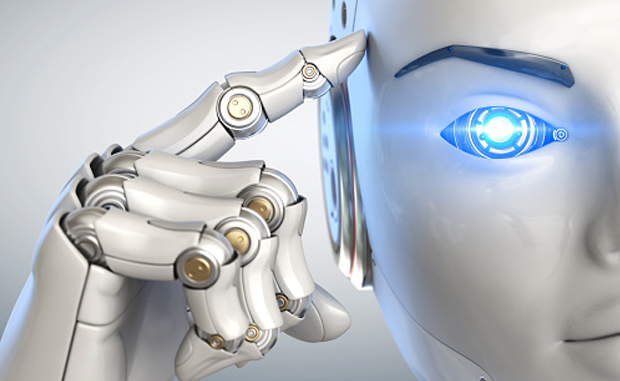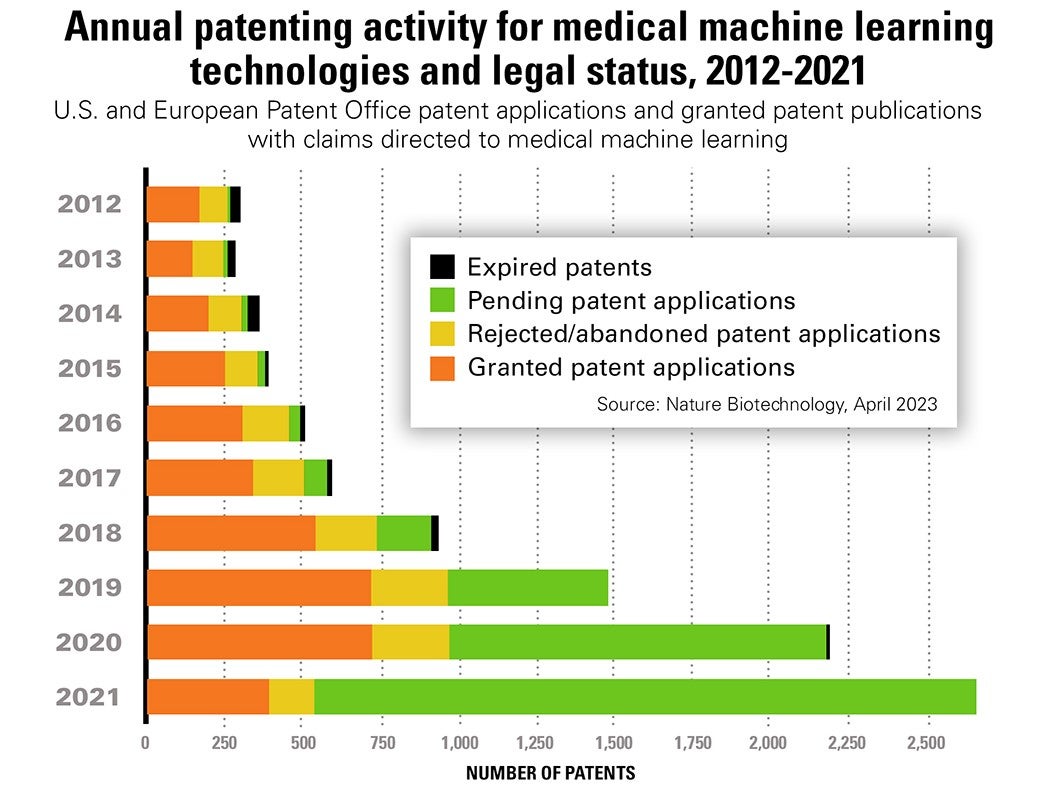

Analyzing AI’s Explosive Growth and Where Patents Are Concentrated

Artificial intelligence (AI) and medical machine learning (MML) in health care are experiencing explosive growth rates, but the numbers belie some of the hype surrounding these technologies, notes a recent Nature Biotechnology research report.
The authors examined two decades worth of U.S. and European Patent Office data and analyzed AI and ML patent trends. The results don’t exactly line up with some public reports and perceptions about these technologies taking over medical diagnoses.
Among the report’s findings:
- Contrary to the AI/MML hype, not many patents have been directed to fully automated AI diagnosis.
- Even when broadly defined, the diagnosis category (semi-automatic and AI-assisted diagnosis) accounts only for about 5% of MML patents.
- Most MML claims are focused on the lower end of the clinical task spectrum, including measurement and task analysis (27%) and mid-level tasks such as detection and classification (36%).
- About one in four of the patents (26%) with MML claims were aimed at technology improvements such as platform tools and medical devices.
- Diagnosis, prognosis monitoring and treatment together comprised only 12% of MML patents, the study states.

Getting a detailed picture of the number of patents issued, the rate at which they are being issued and for what purpose is important, the authors explain. Answering such basic queries are essential to tackling more complex policy issues, such as whether patents provide adequate or necessary incentives to overcome regulatory hurdles, the extent to which patents are fulfilling their disclosure function, enabling cumulative innovation and more.
Large corporations active in the medical devices/technology field, such as Siemens, Philips, GE and IBM and medical tech companies like Microsoft and Google, are among the top MML patent owners along with universities, with the University of California, Case Western University and Stanford University among the top 20 patent assignees.



